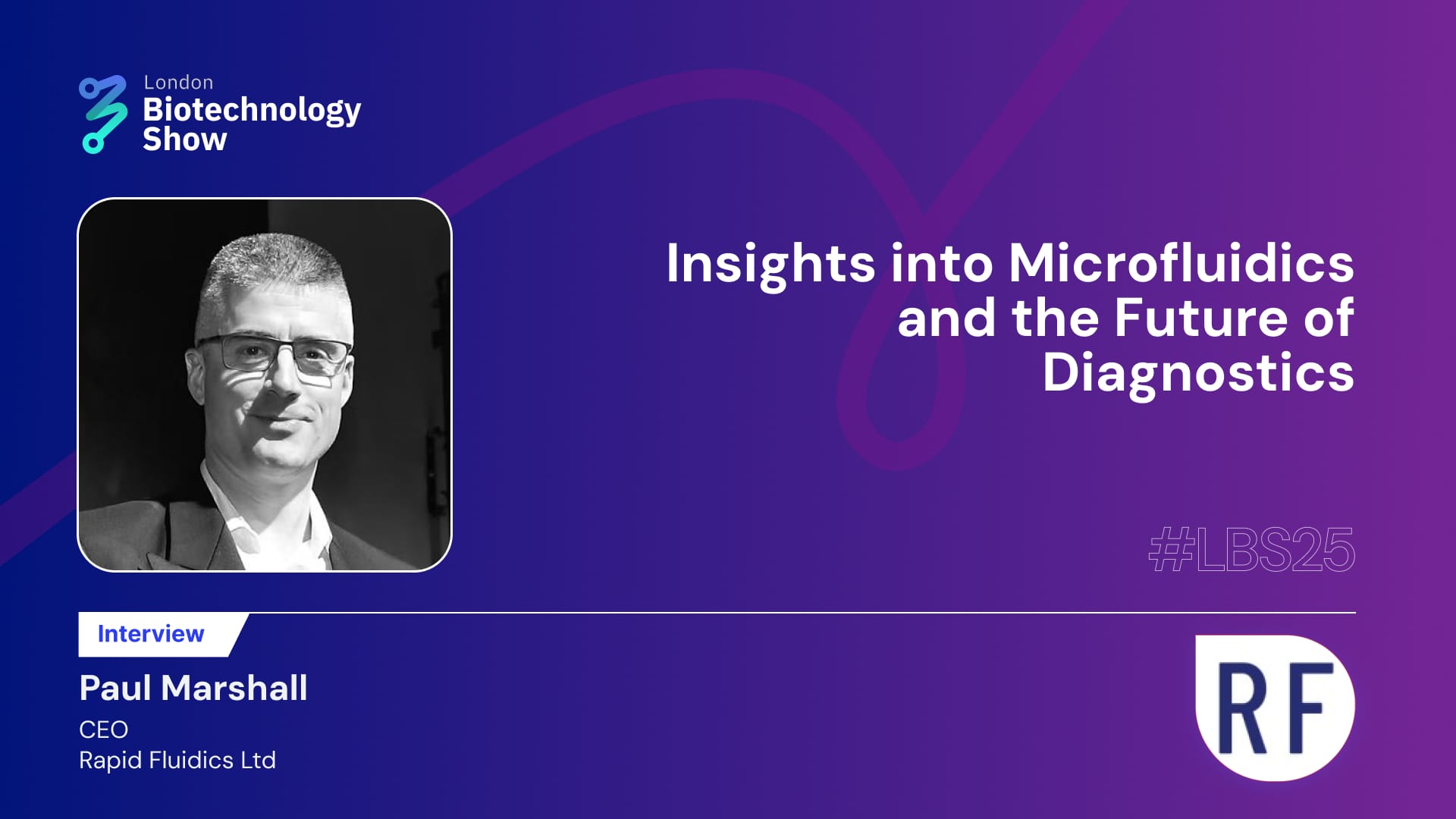Microfluidics is reshaping diagnostics, offering faster, more precise, and cost-effective solutions. However, the journey from breakthrough research to real-world applications comes with significant challenges. In a recent interview, Paul Marshall, CEO of Rapid Fluidics Ltd, talked with Muhammad Younis about the evolving landscape of microfluidics, the key advancements needed to make it more accessible, and the hurdles in scaling from prototypes to mass production. Paul also shared insights on how Rapid Fluidics’ novel approach to rapid prototyping provides a competitive edge and how the company is adapting to the changing demands of industries like healthcare.
#LBS: How do you see microfluidics evolving in the next decade, and what breakthroughs are needed to make it accessible for everyday applications like personalised medicine or portable diagnostic tools?
Paul Marshall: The obvious answer is that it will almost certainly get easier to make smaller and smaller features. If it gets easier, then it gets faster and less costly to develop the tools and equipment needed for mass adoption. Improvements will be needed in sensor technology, data analysis and multifunctionality which we and the market are addressing.
#LBS: What are the main challenges in scaling microfluidic systems from prototypes to mass production, and how can industry collaboration or advancements in materials science address these challenges?
Paul Marshall: From the point of view of Rapid Fluidics’ approach to using additive manufacturing (AM) to create microfluidic devices, the main challenge is the change of material required to suit existing mass-manufacturing technologies, mainly injection-moulding. Existing resins do have a range of properties that can be tuned to behave with similar functionality to thermoplastics and further research is allowing these to be constantly improved. This requirement to scale up to moulding does mean that design-for-manufacturing has to be considered all of the way through the development process, including additional fabrication processes.
There are other processes such as laminate-bonding that can scale from single-figure prototypes to reel-to-reel production, negating the need for modifications to designs. And the AM industry overall is looking to automated processes enabling rapid scale-up utilising consistent designs without the restrictions of additional tooling.
#LBS: With the rapid pace of innovation in microfluidics, particularly in medical diagnostics, how should companies and regulators ensure the technology remains safe, ethical, and cost-effective?
Paul Marshall: Ultimately, this is the purpose of ISO13485 accreditation for medical device production. Compliance requires correct design processes are documented and all risks are managed.
#LBS: Rapid Fluidics has developed a novel approach to rapid prototyping. How does your company's methodology give you a competitive edge, and how do you plan to adapt your services to meet emerging needs in industries like healthcare?
Paul Marshall: When I compare Rapid Fluidics’ place in the market with other suppliers of microfluidics, I see strengths and weaknesses in all processes and these need to be assessed by our clients. By focusing on the use of AM there are two or three substantial advantages.
- Speed, the absolute winner (it’s in the name). Using AM allows prototype production of bespoke designs within a matter of hours. Next-day, and even same-day, delivery allows our customers to race through multiple iterations of parts cutting time and cost to production substantially, which has the added benefit of getting the end product to the final customer (the patient) that much quicker.
- 3D-printing allows for much more complex geometry. Fluid channels no-longer need to be square cross-section in 2.5D. Circular cross-sections following three-dimensional spline paths reduces back-pressure improving fluid flow-paths and also allows for reduced material usage, saving weight and further costs. Fully-enclosed fluid channels mean there are no additional bonding processes required. In addition, it allows for creation of complex anatomical designs such as organ and vasculature models used for research and medical training.
- Using a “print-pause-print” process enables materials or components to be included in the part. These can range from flexible membranes, electronic circuits and optical systems used for fluid flow control and sensing.
However, there are limitations to our capabilities: material limitations as mentioned previously and the size of features. Equipment does exist that can 3D-Print features down to single-figure micron sizes but they’re not commercially viable right now. These factors currently may rule out the use of AM, but ongoing improvements should ameliorate these restrictions in the future.
#LBS: What is your view about events like the London Biotechnology Show which aims to be a pivotal platform to discuss and display biotech solutions?
Paul Marshall: Conferences and expos provide a superb opportunity to bring academic research and commercial solution providers together. By concentrating for a few days, knowledge can be transferred to inform industry of up-and-coming requirements and trends to encourage process improvement, and likewise the science community can learn of new advances in production which may have been modified from other sectors and open up new opportunities.
A lot of this knowledge can of course be gained from media sources, but meeting in person can answer a thousand questions. It is important that while the large global shows have their place, regional events like the London Biotechnology Show allow the local scientific and medtech communities to form stronger networks which can only be a good thing.

